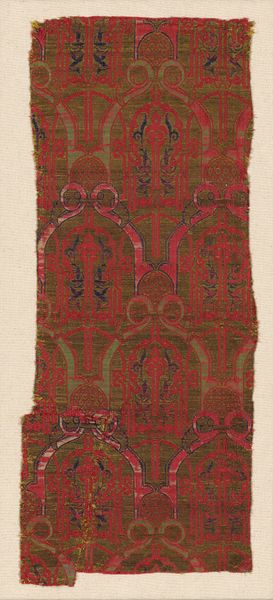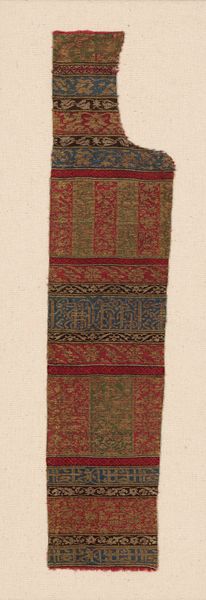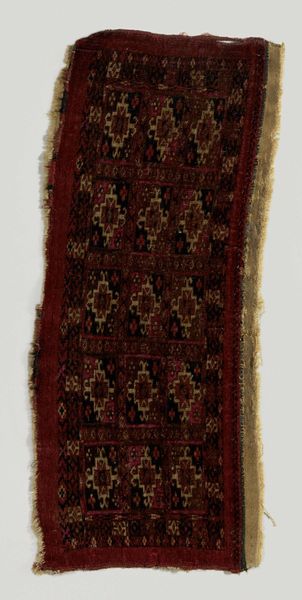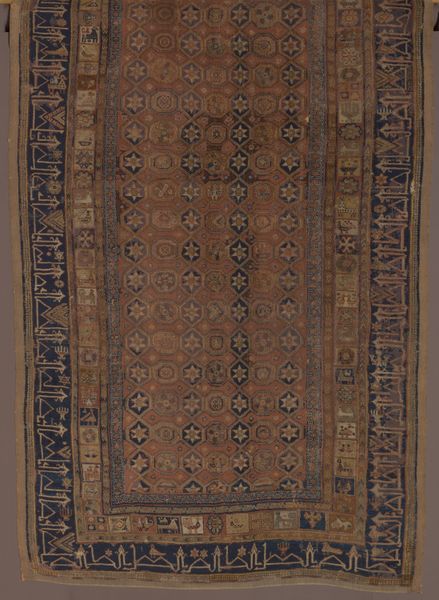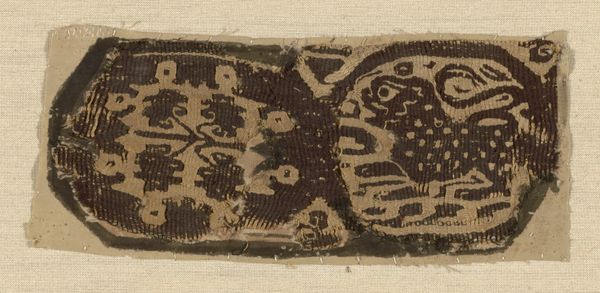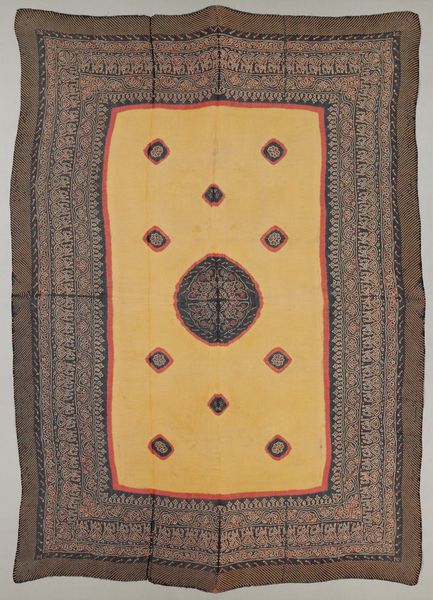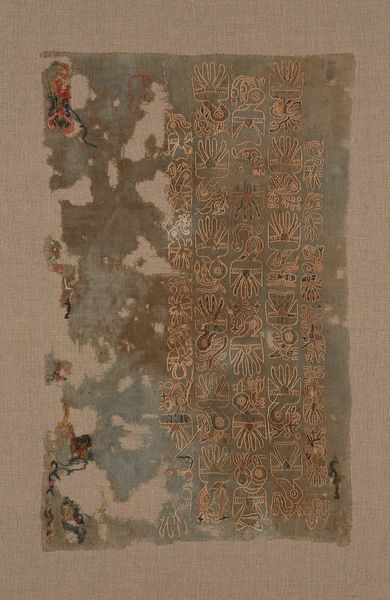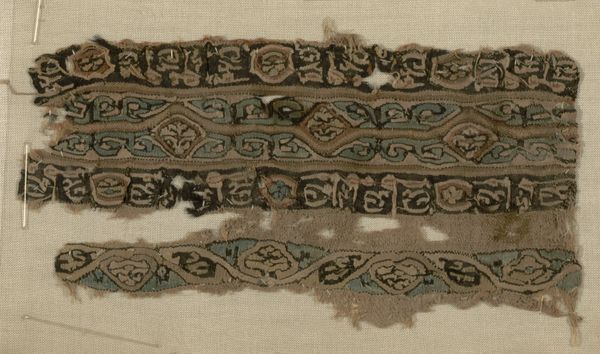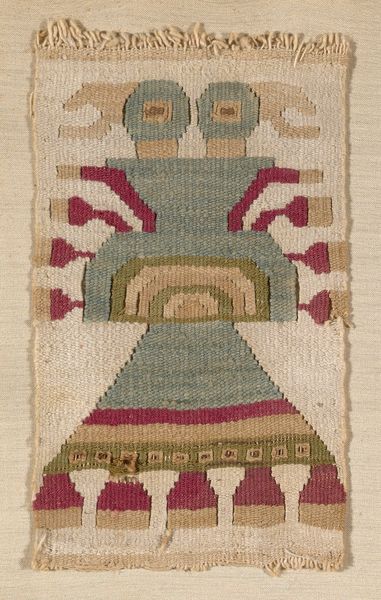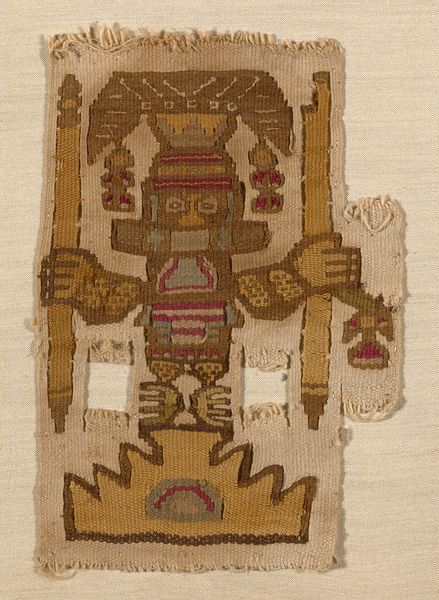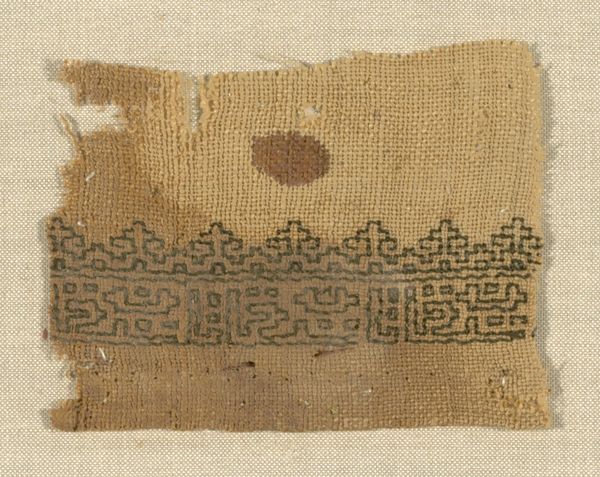
weaving, textile
#
medieval
#
weaving
#
textile
#
geometric
Dimensions: 13.5 × 7.8 cm (5 3/8 × 3 1/8 in.) Repeat: 2.9 × 2.9 cm (1 1/8 × 1 1/8 in.)
Copyright: Public Domain
This is a fragment of the Dalmatic of San Valero, a luxurious fabric likely made by anonymous artisans working in the Mediterranean region. It’s made of silk, with the pattern brocaded using gold thread. Notice how the inherent qualities of these materials influence the fabric's appearance: the silk provides a smooth, lustrous base, while the gold thread adds richness and texture, catching the light to create a shimmering effect. The technique of brocading involves weaving supplementary weft threads—in this case, gold—into the fabric to create the intricate repeating pattern of stylized motifs. Producing textiles like this was a labor-intensive process, requiring highly skilled weavers and access to costly materials. This fragment speaks to the circulation of luxury goods and the complex networks of trade and craftsmanship that flourished in the medieval world. It also challenges traditional distinctions between fine art and craft, reminding us that textiles like this were not merely decorative objects, but significant cultural and economic artifacts.
Comments
No comments
Be the first to comment and join the conversation on the ultimate creative platform.
